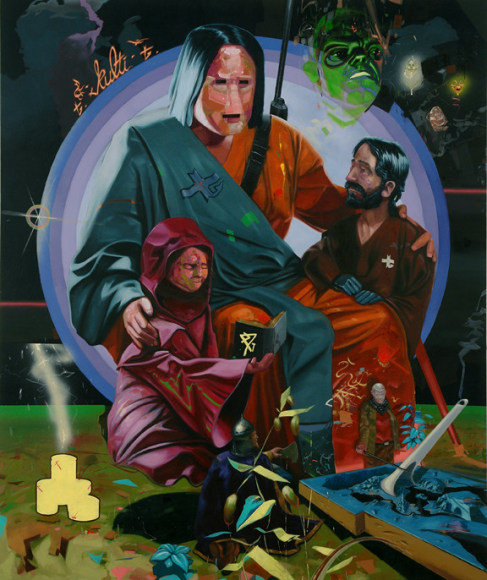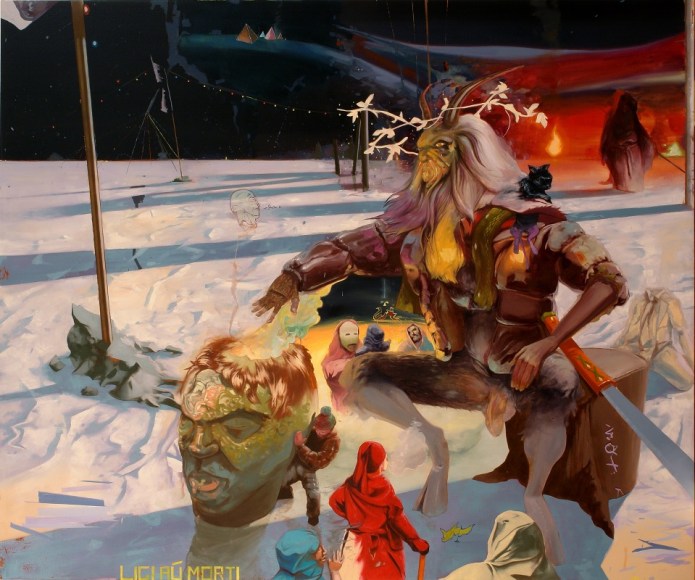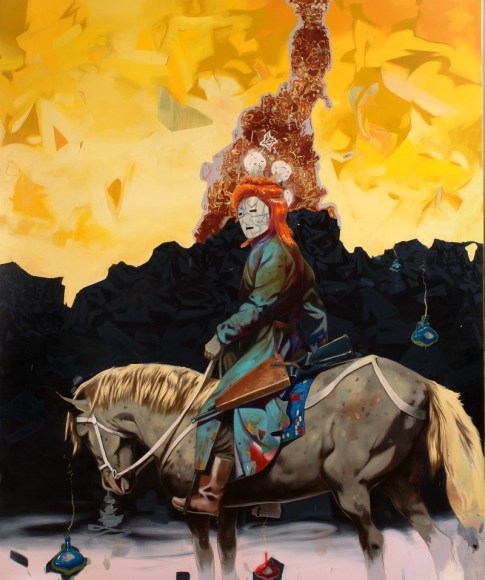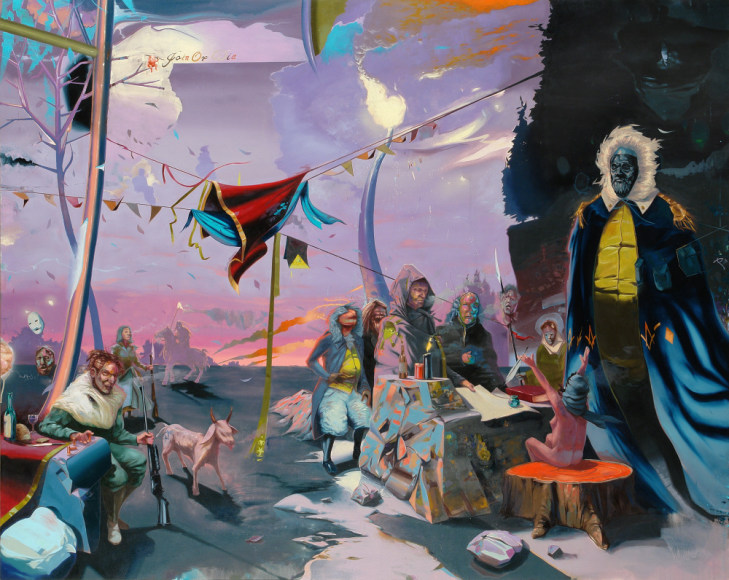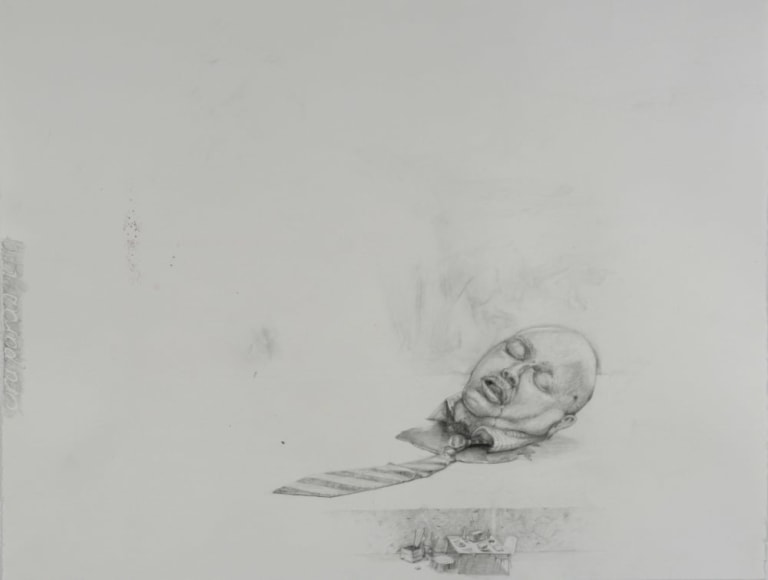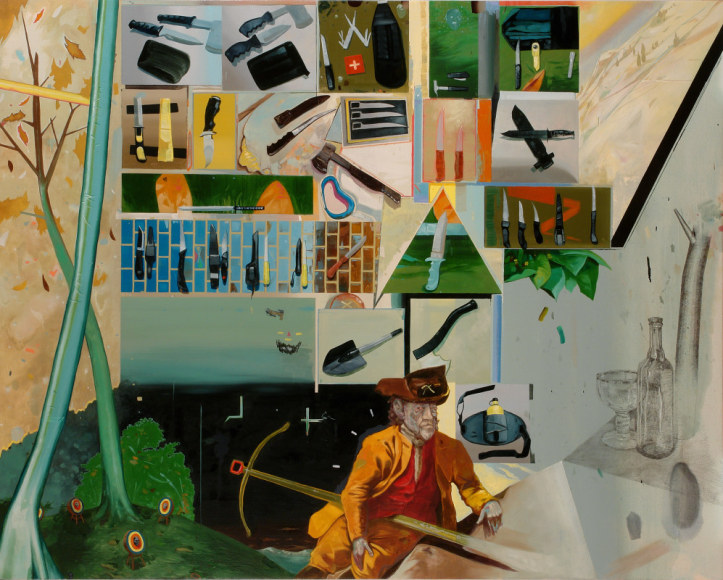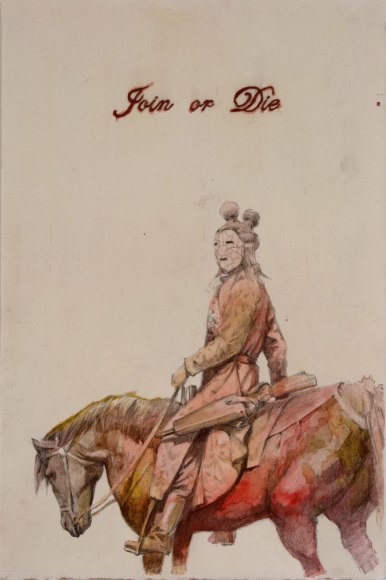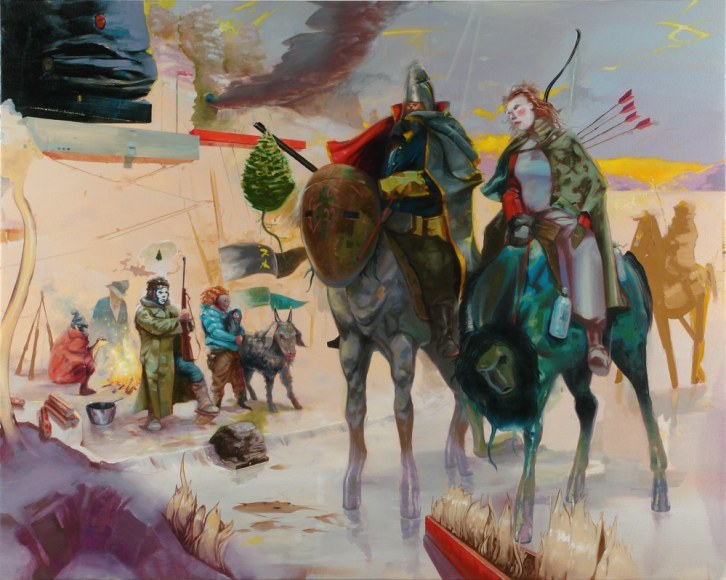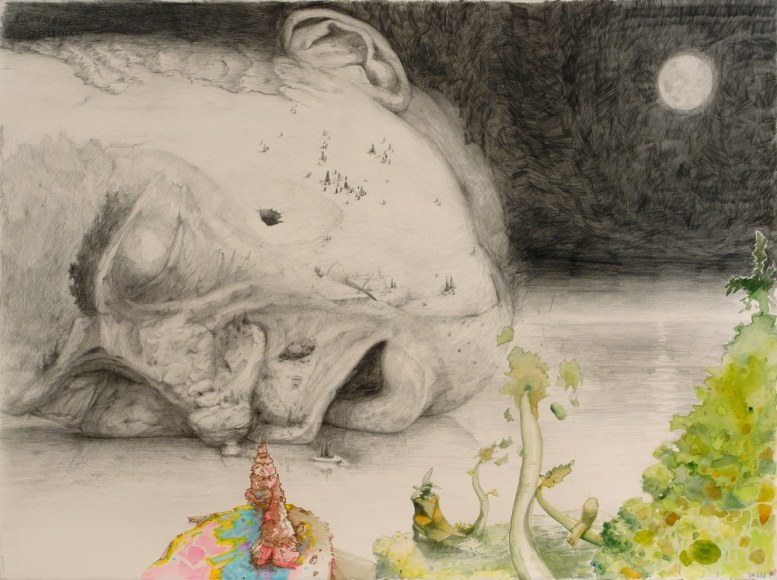STUX Gallery is pleased to present Chicago based artist Scott Anderson in his first New York solo exhibition Join or Die: New Paintings. This exhibit is done in cooperation with Kavi Gupta Gallery Chicago/Berlin and is accompanied by a catalogue. In his new series of paintings, Anderson continues with his preoccupation with the theme of “Hero Worship” and its associated imagery with visions of post-apocalyptic meltdown and crumbling utopias.
In his work, Anderson frequently uses narrative qualities and compositions, which reference religious painting and/or classic pastoral landscapes lending them a twist of certain prophetic wisdom. Despite the strong parallels with classic painting techniques, Anderson uses distorted logic and only a slight observance of the laws of physics in presenting his work. This builds certain uneasiness in the frame of his images, suggesting chaos and only minimal order, a feeling that is often yearned for in our modern youth culture.
Anderson’s images are neo-surreal, fantastical depictions of a world in rubble. He considers the stories told in his work as:
“analogous to various moments of cultural and political upheaval, such as the naïve embrace of unchecked capitalism in the American Revolution, and the inevitable fascism of the Russian Revolution.”
The paintings are littered with symbols of nationalism and war: flags, military coats with epaulettes, and weapons, as well as fantastic creatures: horses with faces that resemble men and lions, Pan-like sorcerers, and deformed humans. Tribal and religious references build a new mythology in a future where only fragments of the past survive. The message is prophetic and condemning. The story is cyclical. Titles such as Alliance and Declaration incite hope and ensue that the chaos will be overcome in time. However, we have seen the repercussions of failed utopia that carries its own demise. This cyclical nature of culture and politics is certainly present in the history of art. Anderson parallels his work with such notions as well:
“One often hears of the ‘death of painting’, or the ‘end of history’. I have acknowledged those facts, and see in them as opportunity to rebuild from the rubble.”

